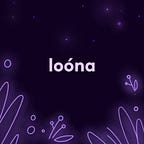Let’s talk about the first unique component of Loóna — our music! Is there such a thing as music therapy?
This article will explore music therapy (MT), how it works in relation to sleep and how we at Loóna have incorporated it into our sleepscapes and soundscapes.
What is music therapy?
Music has been used to treat an array of health concerns, including chronic pain, mental illnesses, disabilities and neurodegenerative diseases such as Alzheimer’s.
In the 16th and 17th centuries music was used to treat mood disorders and during the Second World War it was found to ease distress among sufferers of ‘shell shock’ (now referred to as Post-Traumatic Stress Disorder).
In 2014, experts in Japan reviewed 18 reliable science-based studies about the effectiveness of MT in treating a wide range of conditions. This kind of study had never been done before in the area of music therapy. The review found that MT improves: (a) schizophrenia, (b) other serious mental disorders, (c) gait and related Parkinson’s disease, (d) depression, and (e) sleep quality.
There is still much more to be learnt about how MT actually works and the differences between various types of MT. However, MT has become prevalent worldwide, particularly as studies have shown that participants experience no adverse or harmful effects and tolerate the treatment well in almost all cases.
What’s the evidence?
The 2014 review indicated that one of the reasons MT improved sleep quality among participants was because it improved mental health as “the beauty and rhythm of the music tone allowed the patient to be comfortable.”
This was echoed by a Swedish study, which recommended the use of MT in hospitals to cater for the emotional, spiritual and psychological needs of patients on the basis that “slow […] flowing […] nonlyrical” music stimulates and maintains relaxation, wellbeing and comfort.
More recently, scans of brain activity during an MT session have made the positive emotional impacts of MT visible to neurology experts.
So, how does music therapy have such a significant impact on our mood? Well, studies have demonstrated that music can dramatically influence physiological processes — a decreased heart rate, skin temperature and muscle activity — and psychological processes — self-reported increases in relaxed and calm feelings. At the very least, music therapy is an enjoyable experience for most of us.
A range of different theories have attempted to explain this phenomenon. One is that music is mainly processed by nonverbal areas of the brain, which is where relaxation occurs.
Another is that music helps us to focus our minds on one non-threatening stimulus as it often dominates our environment, making it difficult to ignore. This prevents our minds from wandering and distracts us from negative thoughts or worries.
MT can simply provide a cathartic emotional release for those who have been harbouring negative feelings. This can allow them to process these emotions more successfully during their sleep.
Experts have recommended ways to get the most from your MT. The more you engage with the music, the more your brain will focus on it. The subjective nature of music and relaxation means that it’s a good idea to start with the music that makes you feel most relaxed. However, be open to the idea that slight tweaks to the sedative nature of your music can make it more relaxing.
Loóna’s take on music therapy
Research tells us that MT is applicable to stress management and relaxation. We also know that stress management and relaxation are crucial in the treatment of sleep problems like insomnia.
It is unsurprising then that the relaxing effect of MT makes it a useful tool in our pre-sleep winding-down routine. Considering how much of a role stress and anxiety often play in sleep problems, MT is a crucial component of Loóna’s sleepscapes.
A University of York study looked specifically at the impact that listening to music had on the sleep quality experienced by students, adults in hospital settings and elderly people. The study concluded that music-assisted relaxation is an effective aid for improving sleep quality.
Although studies have suggested that music alone can effectively improve sleep, researchers have found that the benefits of music therapy are augmented when combined with other relaxation techniques such as guided imagery and art therapy.
With this research in mind, Loóna’s colouring activities are accompanied by soothing, ambient sounds. These sounds relax the mind by allowing the brain to concentrate solely on the exercise. They also strengthen the comforting environment described by the storyteller through guided imagery. Similarly, the app has a library of audio files ranging from soothing piano to ethereal tones.
In short, music therapy is a key feature of the Loóna app, helping you to get in the mood for sleep.
Sleep well!
Reviewed by Jennifer M Mundt, PhD, Assistant Professor of Neurology (Sleep Medicine) and Psychiatry and Behavioral Sciences
